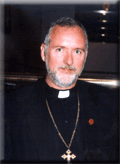Many of these woman and children are recruited from one region of Senegal and transported by traffickers to another region where they are placed in exploitative situations. Others migrate on their own initiative, but once in a new destination fall prey to traffickers who take them in and subject them to sexual exploitation or abusive labor.
Women and children come from rural areas all over Senegal to urban and tourist areas for prostitution in brothels, private homes, weekly markets, and tourist establishments. The cities of Dakar, Thies, St. Louis, Kaolack, and Zinguinchor have high concentrations of adult and child prostitutes. Tourist zones, including Kaolack, Mbour, Mbour Sally, Cap Skiiring, and Sine Saloune, have active prostitution industries as well. Increasingly, weekly markets transform at night into hubs of prostitution. Under the UN Protocol definition of trafficking, children placed in prostitution by adults are trafficking victims, as are exploited adults.
This research reveals that most victims of child trafficking in Senegal come from particularly impoverished rural regions of the country. In addition, urban street children are recruited for prostitution in brothels, private homes, and hotels in city centers. Their pimps, or traffickers, can be any one of a range of people, including former or older Senegalese prostitutes, tourists or other foreigners, or people working in tourist establishments. Moreover, there is substantial evidence of organized prostitution that may constitute trafficking.
Trafficking within the country is more prevalent than trans-border trafficking and the majority of victims are children. Within Senegal, religious teachers called Marabout traffic boys, called talibe, by promising to educate them, but subjecting them instead to forced begging and physical abuse. A 2007 study done by UNICEF, the ILO, and the World Bank found that 6,480 talibe were forced to beg throughout Senegal.
Friday, January 9, 2009
Subscribe to:
Post Comments (Atom)

No comments:
Post a Comment